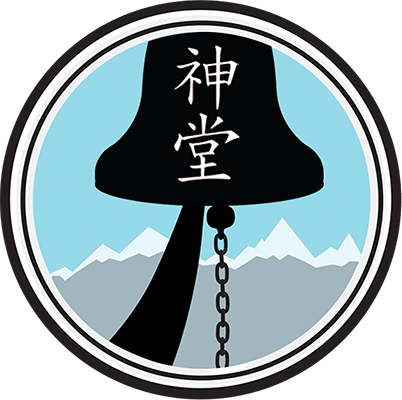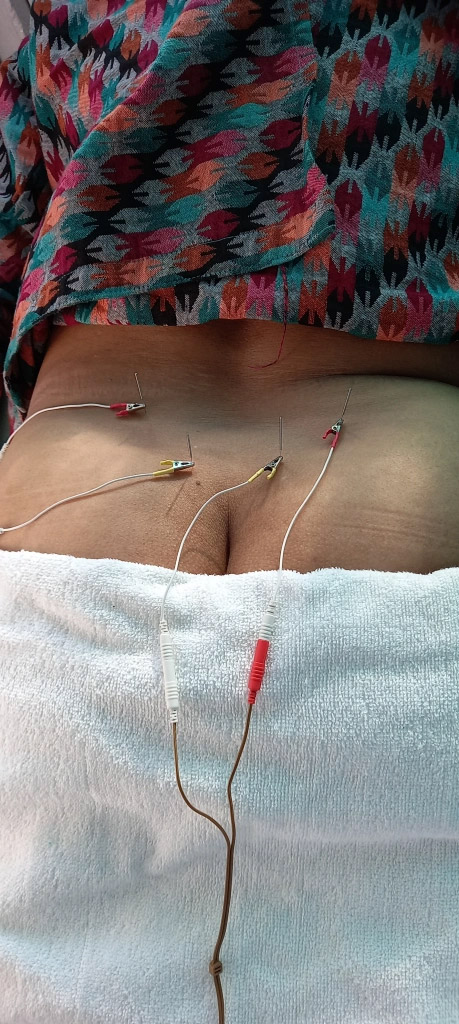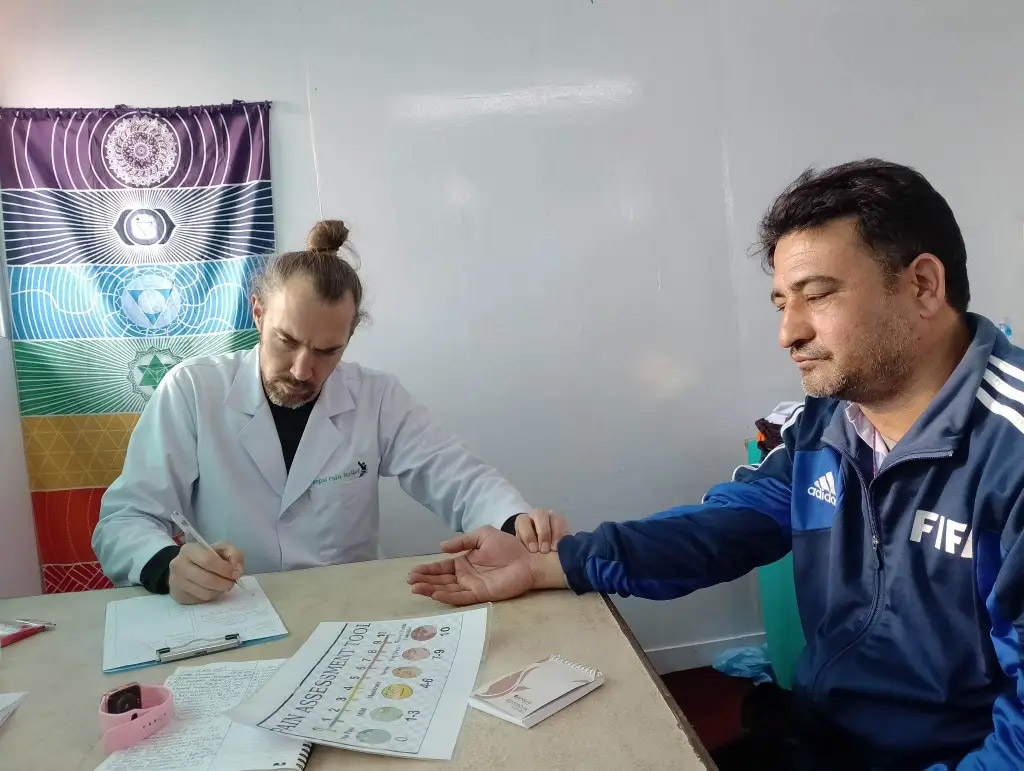Acupuncture and Pain Relief in Nepal
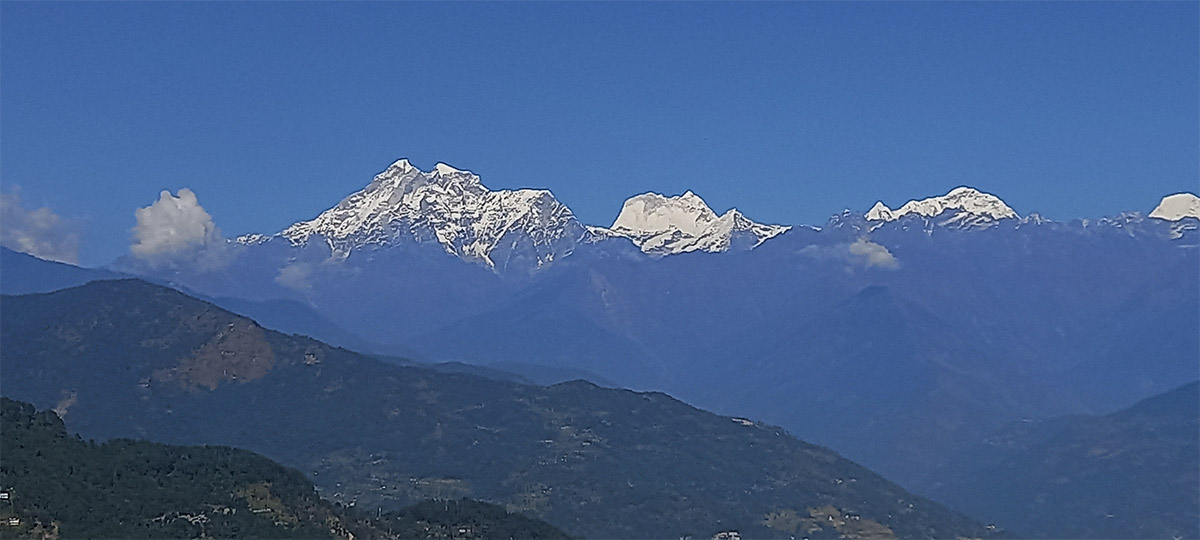
The Himalayan mountain range has always held a special place in my heart. I have long considered it a place of meditation, spirituality, simplicity and health. A photo of the range set behind a buddhist monastery bell taken from the Indian side, from a ski area called Auli, was the inspiration for the logo of Spirit Dome Qigong a.k.a Spirit Dome Healing Arts. So, when I was offered the chance to complete a three week intensive acupuncture internship in the foothills of the Nepal Himalaya, it seemed that destiny had intervened. It was not my first time to Nepal as I had spent nearly four months there previously moving around in the jungle, the city, and for two weeks, trekking on the Annapurna circuit. What would be new was staying put in a clinic with my nose to the grindstone working out differential diagnosis for the variety of infirmities I would face.
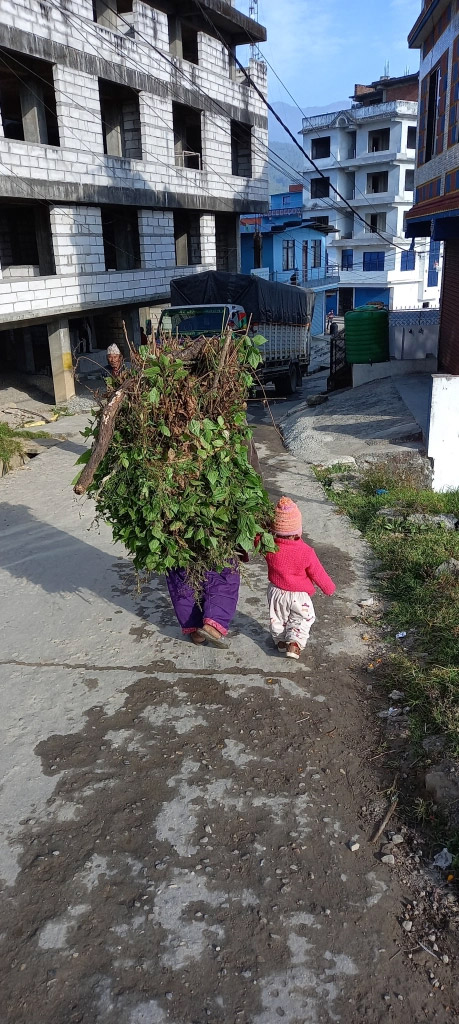
The Nepali culture is a complex mixture of down-to-earth pragmatism with a bewildering number of rituals and customs as well as taboos. This is perhaps not surprising due to the combination of their location in the high hills (at nearly 2000 meters) and their Hindu- Buddhist traditional background and the fact that they are nearly all farmers. Trying to get to know these people is further complicated by the fact that some Nepali are more or less Buddhist or Hindu than even some of their close relatives, but mostly by the fact that there are hundreds of ethnic groups intermingled within communities whose names signify specific languages, heritages, places of origin differences and, perhaps most importantly, caste designations. Often these names are their surnames so they are unavoidable markers. It was into this milieu our NPR clinic began to run, suddenly, after so many years of its doors being closed to treatment.
The fact that NPR had earned such a good reputation from years of past service and the fact that the villagers needs were so great is what created such a demand for treatment. Within the first week of opening we went from having around 20 patients to over 40, per day. Despite the wide variety of root issues we saw among the people the overall complaints were for pain, mainly of joints and back. Perhaps 80% of the cases we treated for knee and lower back pain, most often manifesting concurrently. We understood this to be owed mainly to the farming lifestyle along with the fact that most rural Nepalis don’t own or wear closed toes shoes and, more significantly, that Nepali houses are rarely heated.
Having been already prepared for the cultural shock of living in rural Nepal from my previous travels and having had appropriate experience from my previous year as an acupuncture intern as well as having run my own makeshift clinic, I felt more than ready for a fast- paced triage clinic. Depending on how the day unfolded I found myself observing the clinic director, Aram, complete his diagnosis and hand the patient off to me along with a point prescription and a recommendation to use the Electrical stimulation machine. Quite often, however, I would complete the diagnosis myself and continue on to the treatment while periodically checking with Aram about a point combination or for his opinion on a patient’s pulse. I learned many things from this experience. First, I had to become quite adaptable to the situation in a variety of ways. I had to learn to wear many hats as a coordinator, therapist and leader for the three nurses and one other volunteer. Aram would often be working on a sensitive case and the clinic had to keep moving. I needed to be sensitive to cultural and religious issues as Nepali people can be quite conservative. Above all, however, I need to trust my own instincts and knowledge in terms of diagnosis and treatment styles. There was no time to constantly ask someone for help.
I was surprised to realize that I felt quite comfortable and self-assured in this respect. I now understand that that is owed almost entirely to the intense effort I had put into the study of Chinese Medicine and acupuncture during the previous years in the various schools and with the various teachers from whom I have learned. The confirmation was that, though the clinic was full, many of the people were new. People were coming from the southern border of Nepal. People were arriving after days of journeying and organizing to stay with friends in order to have a few days of treatments in a row. The ones that came back had improvement to their pain and if they didn’t we had a variety of options to treat them and were able to find something that worked.
I am very grateful for this entire experience as I feel that I was prepared all along for this. This internship was my opportunity to begin the process of refinement of a knowledge base that will last a lifetime and will undoubtedly morph into an authentic and artistic style of healing.
